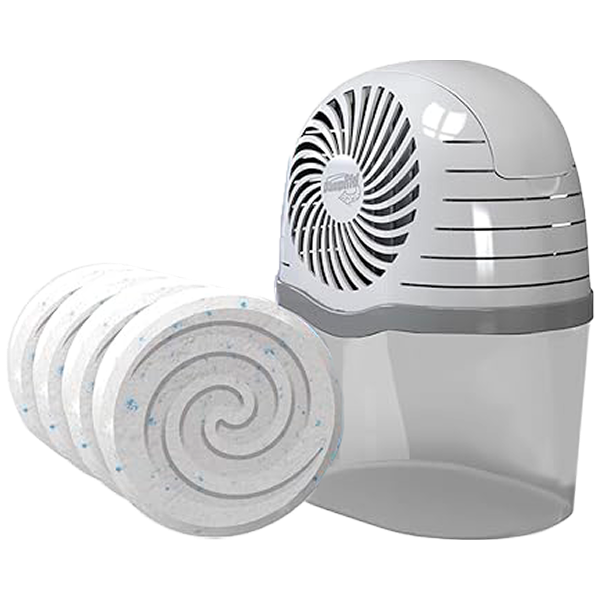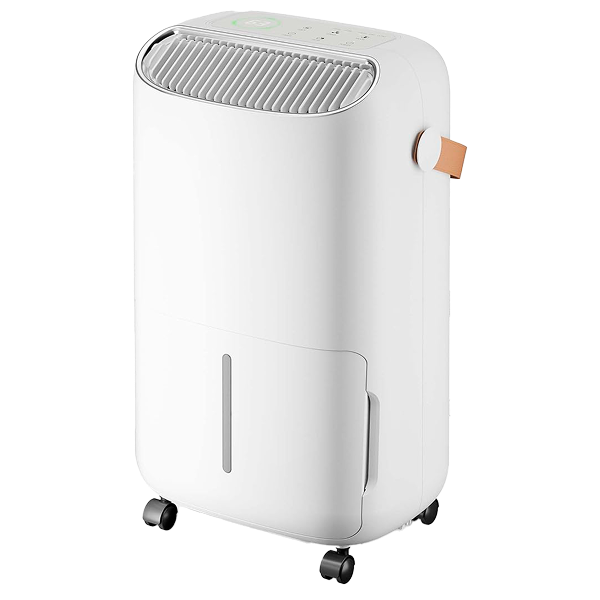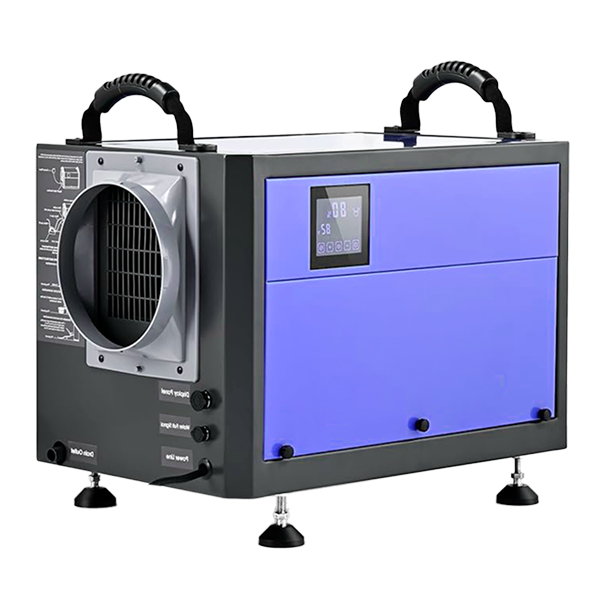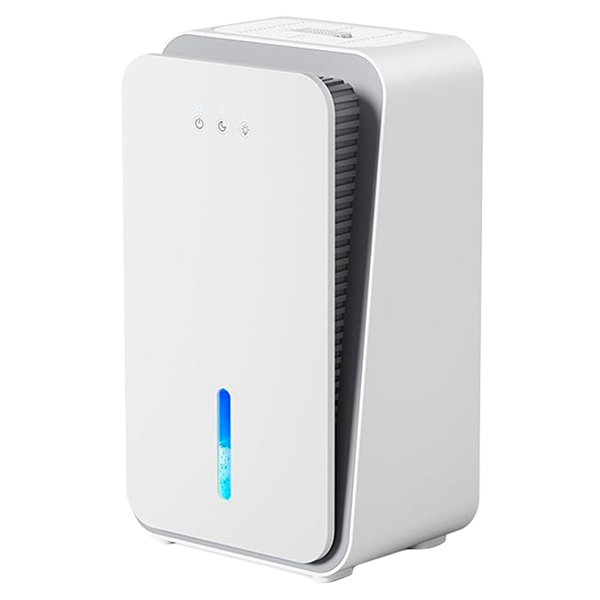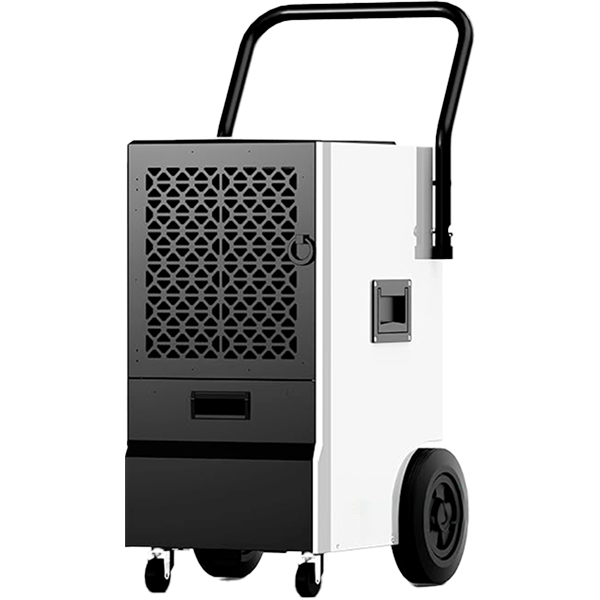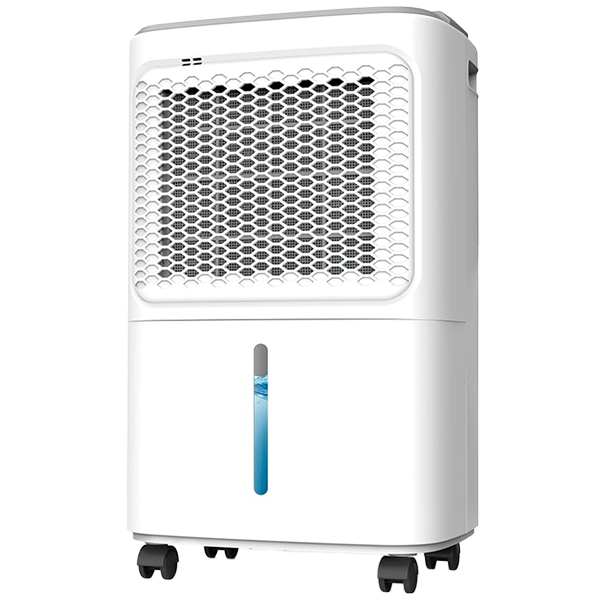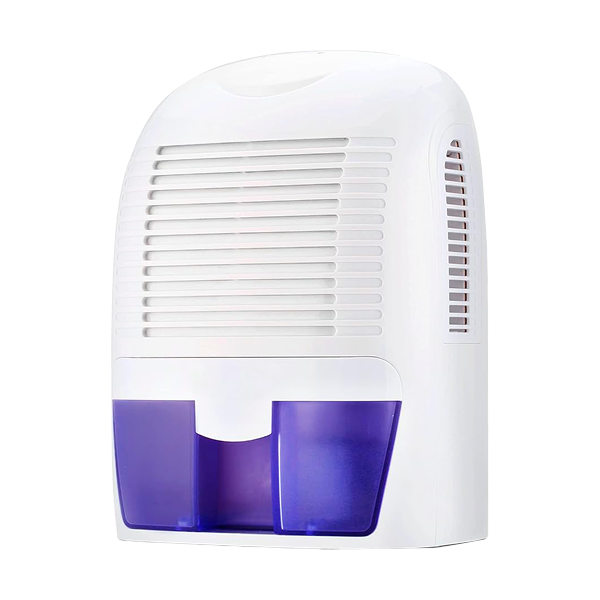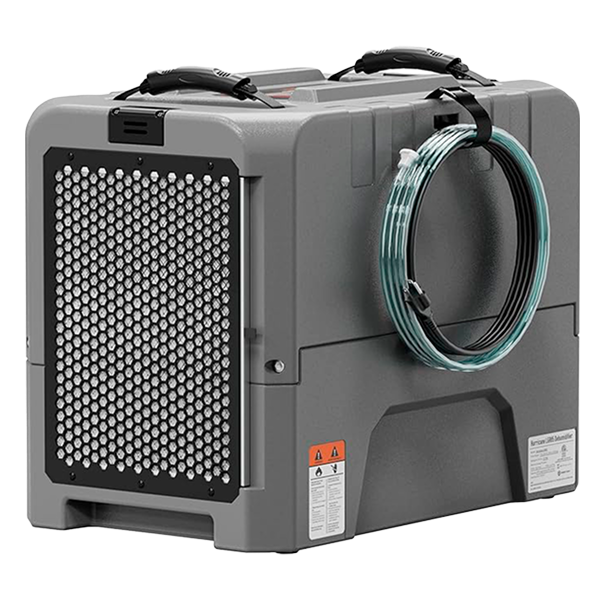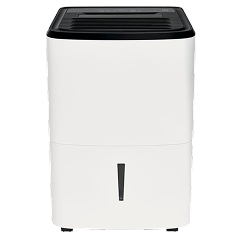Compact, portable, and discreet, moisture absorbers are an ideal solution for combating humidity in small and confined spaces – from bathrooms and storage rooms to wardrobes and areas under sinks. Because they don’t require electricity to run, but usually feature silica gel crystals or calcium tablets to suck and lock in moisture, they’re best suited for cupboards and rooms without access to electricity. In this guide, we’ll break down the key features to look for when selecting a moisture absorber for your space.
Moisture Extraction Capacity (L/24h)
This indicates the amount of moisture the moisture absorber can remove from the air in 24 hours. Moisture absorbers are good for small spaces and mild humidity issues.
- 0.3–0.5L/day – The most basic extraction capacity common with silica gel packets and hanging bags.
- 0.8-2L/day – A better extraction rate common with slightly larger models, such as buckets and tablets.
- 2-4L/day – An advanced extraction capacity, more rare for moisture absorbers.
Tank Capacity
Some reusable moisture absorbers might have a water tank. The tank stores the moisture that’s been pulled from the air and usually turns it into a slush as the tablet or cartridge dissolves. For small spaces, compact tanks are normal – but they’ll need more regular emptying, which can be annoying over time, especially in rooms with persistent damp issues.
- Under 1 Litre – Most common, especially for disposable moisture absorbers such as buckets.
- 1-2 Litres – Typical for most household moisture absorbers. You may need to empty it every few weeks, or sooner in very damp rooms.
- 2-4 Litres – Less common but useful for bigger problem areas or less frequent maintenance. Best suited for small garages, utility rooms, or rarely accessed storage spaces.
Opt for a reusable dehumidifier and choose a design with a clear water window to check the fill level at a glance.
Coverage Area
Moisture absorbers are designed for small, enclosed areas rather than whole rooms. They work best where airflow is limited and places where an electric dehumidifier might be too big or impractical for. Because they have no fan to circulate air, they’re most effective within the immediate space they’re placed.
- <10 m² – Ideal for wardrobes, cupboards, en-suite bathrooms, or storage boxes.
- 10–20 m² – Suitable for single bedrooms, small offices, or kitchens with persistent damp.
Open doors and poor insulation can reduce coverage, so make sure the doors are closed in the room you’re targeting.
If you require moisture control for a larger area, consider getting a dehumidifier instead. See our dehumidifier buyer’s guide to help you find the right type of dehumidifier for you.
Moisture Absorber Types
Typical moisture absorber types fall into a few main categories, mostly based on the active ingredient and how/where they’re used:
1. Calcium chloride crystal absorbers
- Tub or box – hard plastic container with crystals inside; collects liquid brine in the bottom.
- Calcium tablet – Solid tablet placed above a water tank; it slowly dissolves as it absorbs moisture and turns into slush in the water tank.
- Hanging bag – crystals in a top section, collected liquid in a lower sealed pouch.
- Refill stations – reusable tub with replaceable crystal packs.
2. Silica gel desiccants
Small pouches or canisters are often used in electronics, toolboxes, or storage bins.
3. Clay or mineral absorbers
- Natural clays like bentonite or montmorillonite.
- Typically slower and lower capacity than calcium chloride or silica gel, but inexpensive and reusable.
4. Charcoal-based odour & moisture absorbers
Often used in wardrobes, fridges, or cars, focuses as much on odour control as moisture removal.
Auto Shut-off (Tank Full)
Most moisture absorbers will simply stop working once the tablet or silica gel crystals are used up. However, more advanced units include an auto shut-off feature when the tank is full to prevent leaks. This is sometimes combined with a full tank indicator – usually a glowing LED light or illuminated water tank. This way, you’re always reminded to empty the water tank and can maximise the moisture absorber’s use.
Tank Access & Ease of Cleaning
Because moisture absorbers use an active ingredient to help trap moisture, they might sometimes leave a residue or need to be regularly cleaned or emptied. Having easy access to the water tank is therefore important. If you’re placing your moisture absorber in a hard-to-reach area, such as on a high shelf or tucked away in the back of a cupboard/storage, ensure you can conveniently empty the water tank without spilling it over, and that you can retrieve the unit and replace it as needed.
Portability Features
The main USP of moisture absorbers is their size. They’re compact enough to place on shelves and in room corners, easy to move around and store when not in use.
- Compact Shape – Choose a size and shape that fits the intended spot, whether that’s a narrow wardrobe rail, a corner of a cupboard, or a small shelf.
- Lightweight Build – Even larger bucket-style absorbers weigh very little when empty, making them simple to reposition or store.
- Hanging Option – For wardrobes and vertical spaces, hanging bags save shelf space and place the absorber right where damp tends to collect.
Weight & Dimensions
As we’ve explained earlier in the guide, many choose a moisture absorber over a dehumidifier because of its compact size and portability. While a 0.5kg difference in weight might not matter so much, weight shouldn’t be overlooked. Consider where you’re going to place the unit and what size it needs to be for you to comfortably replace it regularly.
For example:
- Under-the-sink areas and cupboards – Space is tight, so a small, lightweight unit is easier to slide in and pull out when it’s time to empty the tank.
- Small rooms – Compact dimensions mean it won’t take up valuable floor or shelf space.
- Drawers, shoe storage, and sports equipment bags – Ultra-light, pocket-sized models can be placed inside without adding bulk or weighing the container down.
Colour Options
Function is the priority, but if your moisture absorber is in plain sight, the look matters too. Most hanging bags and buckets come in unattractive plastic designs. Some brands offer black, grey, or decorative designs to blend in with furniture or shelving. Choosing a neutral or matching colour can make it less noticeable in living spaces.
Tank Material
Most tanks are made from clear or semi-clear plastic so you can see when they’re full. Look for sturdy, crack-resistant materials such as metal or thick plastic if you plan to move the unit. Transparent tanks make it easier to check water levels at a glance, while tinted or opaque tanks can help hide the contents if you prefer a cleaner look.
Leading Manufacturers Overview
Let’s have a look at some popular moisture absorber manufacturers to help you filter by brand and find a suitable solution for you.
Unibond AERO
Best for: Reliable tablet-based moisture control | Household use
Unibond AERO is one of the most recognised names in passive moisture absorption. Their units use replaceable calcium chloride tablets to trap excess humidity and reduce musty odours.
- Tablet format with replaceable refills
- Compact units suitable for bathrooms, kitchens, and wardrobes
- Some models are designed for discreet placement in living areas
- Well-built and widely available in supermarkets and DIY stores
Cons: Ongoing cost for tablet refills; extraction rate depends heavily on room conditions.
ABSODRY
Best for: Simple tablet system | Small rooms and cupboards
ABSODRY offers moisture absorbers that use calcium chloride tablets in reusable containers. The designs are straightforward and focus on function over style.
- Tablet format for long-lasting absorption
- Reusable outer container with easy tablet replacement
- Ideal for wardrobes, under-sink cupboards, or boats/caravans
- No electricity required
Cons: Basic plastic housing; limited design options.
ACANA
Best for: Bucket-style absorption | Flexible cartridge system
ACANA specialises in moisture traps with a bucket and cartridge setup. The design makes it easy to swap refills without handling messy brine.
- Bucket format with replaceable cartridges
- Suitable for utility rooms, sheds, or enclosed spaces
- Sturdy build and stable base to prevent tipping
- Low-maintenance design
Cons: Bulkier than tablet or hanging bag models; not suited for very tight spaces.
CUQOO
Best for: Value buckets | General household use
CUQOO moisture absorbers are affordable bucket-style units suitable for a range of environments. They’re designed for straightforward, low-cost humidity control.
- Bucket format for stable placement
- Good capacity per price ratio
- Simple, reusable design
Cons: Plain appearance; no advanced features or odour control.
NYXI
Best for: Hanging bag convenience | Wardrobe and storage use
NYXI focuses on moisture control in tight, vertical spaces. Their hanging bag absorbers work well in wardrobes, coat cupboards, and small storage areas.
- Hanging bag format for easy placement on rails or hooks
- Disposable after use – no cleaning required
- Lightweight and portable
- Ideal for clothes, shoes, and fabric storage
Cons: Lower total capacity; not suited for anything larger than a cupboard.
ANSIO
Best for: Versatility | Choice of bags or buckets
ANSIO offers both hanging bags for wardrobes and bucket-style units. This makes them a flexible choice for mixed household needs.
- Choice of hanging bags or reusable buckets
- Covers everything from small wardrobes to small rooms
- Affordable and widely available online
- Simple, no-fuss designs
Cons: Hanging bags have limited capacity; buckets are basic plastic with no extra features.


